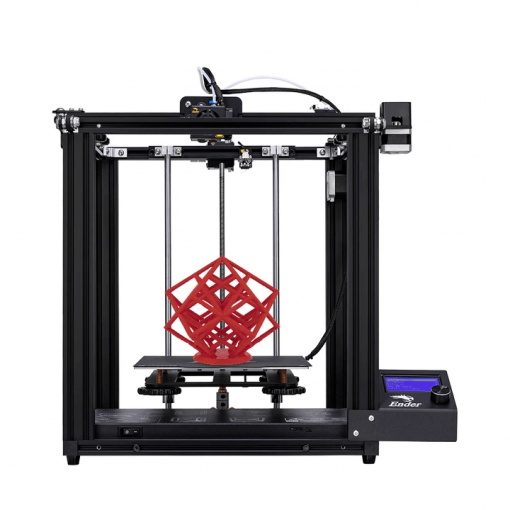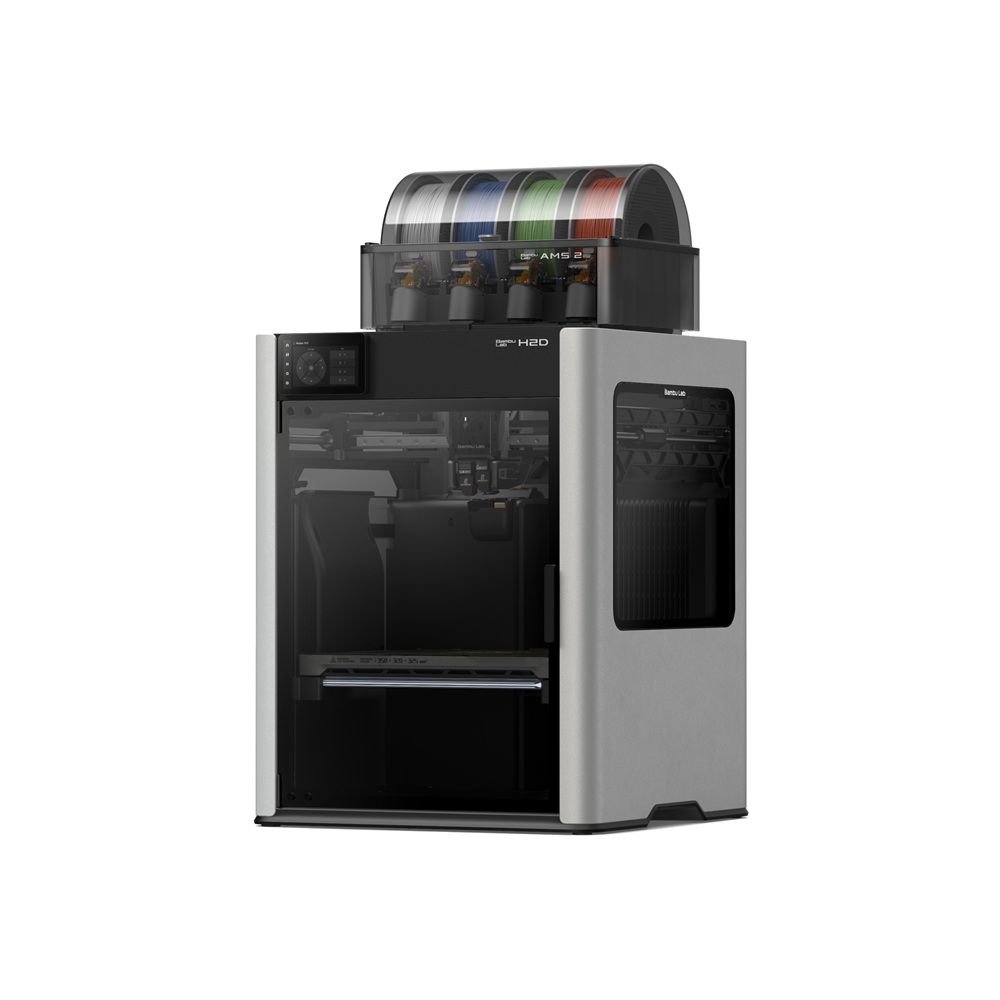Compare Ender 5 vs H2D
Comparison between the best 3D printers
Choose the best 3D printer at the best price. The cheapest 3D printers are here.
Buy a 3D printer here with 3D Fila.
 |
 |
|
| Model | Ender 5[BUY Ender 5] |
H2D |
| Printing Material | Filament | Filament |
| Buy Filament for Creality 3D Ender 5 | Buy Filament forBambu Lab H2D | |
| Estimated price | $399,00 | $1899,00 |
| Manufacturer | Creality 3D | Bambu Lab |
| Release Year | 2020 | 2025 |
| Print Volume [mm] | 220x220x300 | 350x320x325 |
| Printer Size [mm] | 485x510x552 | 492x514x626 |
| Weight [kg] | 11,8 | 42,3 |
| Power Loss Recovery | YES | YES |
| Enclosed printer | NO | YES |
| Bed Leveling | Manual | Automatic |
| Filament End Sensor | NO | YES |
| Bed type | Heated | Heated |
| Power supply system | Bowden | Direct Drive |
| Standard nozzle | 0,4 | 0,4 |
| Maximum Nozzle Temperature [°C] | 255 | 350 |
| Maximum Bed Temperature [°C] | 100 | 120 |
| Maximum printing speed [mm/s] | 180 | 600 |
| Filament holder | YES | YES |
| Camera for supervision | NO | NO |
| Recommended filaments | PLA, TPU, ABS, PETG | PLA, PETG, ABS, ASA, TPU, PVA, Nylon (PA) |
| Recommended slicers | Cura, Simplify, Slic3r | Bambu Studio |
| Maximum Resolution [mm] | 0,1 | 0,01 |
| Processor | 32 bits | |
| Display | Mono | Touchscreen 5'' |
| Power Supply | 24V / 360W | |
| Connectivity | SD / USB | Wifi, Bambu bus, Cartão SD |
| Operating systems | Windows, Mac, Linux | Windows, Mac, Linux |
| Date of registration in the system | 2021-04-15 | 2025-03-31 |
| Release date | 2020 | 2025 |
| Extra features | Crealitys Ender 5 stands out with a solid frame and a larger 220 x 220 x 300mm print volume. Its assembly is simple and quick, offering high print quality and speeds of up to 80mm/s. With a magnetic bed, it makes it easy to remove prints. Notable for being hackable and expandable, the Ender 5 continues Crealitys innovative tradition in the affordable 3D printer market. Equipped with a 350W/24V Meanwell power supply, it heats up quickly, in addition to having efficient cable management and modified Marlin firmware. Its unique design includes dedicated stepper motors for each axis and smooth movement on the Y axis, providing more consistent and detailed prints. | Bambu Labs H2D combines high-speed 3D printing with a chamber heated up to 65 °C, dual extrusion with automatic nozzle switching, an AMS for filament drying and exchange, and AI sensors that detect failures. It offers optional laser and digital cutting capabilities, features intelligent calibration through computer vision, vibration control, enhanced fire safety, and real-time camera monitoring. |
| Support for multiple colors and materials (AMS and CFS) | NO | YES |
Notes * |
||
| Cost-benefit | 7 / 10 | 7 / 10 |
| Hardware | 1.5 / 10 | 8 / 10 |
| Tela | . | . |
| Print volume | 3 / 10 | 4 / 10 |
| Performance | 1 / 10 | 5 / 10 |
| [BUY Ender 5] |
Conclusion |
| In conclusion, the comparison between the Ender 5 and the Bambu Lab H2D highlights the strengths and weaknesses of each printer in relation to their intended user base and applications. The **Ender 5**, priced more affordably, stands out as an excellent choice for hobbyists and beginners looking for a reliable and upgradeable 3D printer. It offers a solid build quality, decent print volume, and simple assembly, making it accessible for those new to 3D printing. While it lacks some advanced features, such as automatic bed leveling and a larger print volume compared to the H2D, it provides versatility with compatible filaments and a straightforward user experience at a lower price point. On the other hand, the **Bambu Lab H2D**, while significantly more expensive, offers a plethora of advanced features designed for professional and industrial users. Its larger print volume, automatic nozzle switching, and support for multiple materials make it suitable for complex and multi-material projects. The high-speed printing capabilities and modern features such as intelligent calibration and real-time monitoring cater to advanced users seeking efficiency and precision. Ultimately, the choice between the two printers should be based on specific needs. For users prioritizing cost-effectiveness and beginner-friendly options, the Ender 5 is a solid choice. In contrast, those requiring professional-grade performance and advanced functionalities may find the investment in the H2D justified, despite the higher price. |

